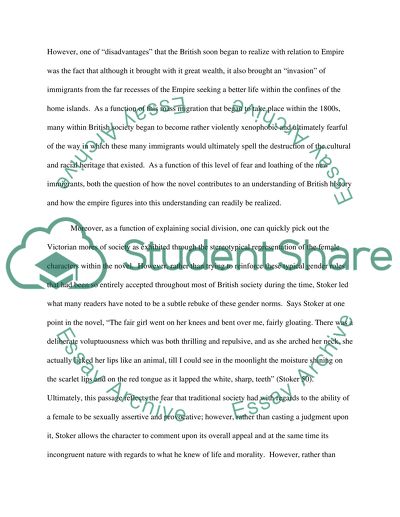Retrieved from https://studentshare.org/literature/1468592-bram-stokers-dracula-an-analysis-of-historical-meaning-through-the-lens-of-empire
https://studentshare.org/literature/1468592-bram-stokers-dracula-an-analysis-of-historical-meaning-through-the-lens-of-empire.


